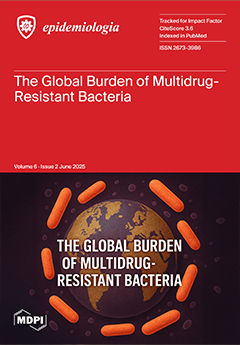Introduction: Stroke is one of the leading causes of death and disability worldwide. In Brazil, it remains the primary cause of mortality among adults. Although overall stroke mortality rates have declined, the absolute number of stroke incidents, deaths, and years of life loss continues to rise, particularly in developing and underdeveloped countries.
Objective: The aim of this study was to analyze trends in stroke mortality across different age groups and both sexes in Espírito Santo, Brazil, from 2000 to 2021.
Methods: This ecological time series study utilized secondary data from Espírito Santo, Brazil, from 2000 to 2021. Mortality data, categorized by sex and age group, were obtained from the Department of Informatics of the Unified Health System (DATASUS) database. Stroke-related mortality included deaths recorded under the International Classification of Diseases, 10th Revision (ICD-10) codes for subarachnoid hemorrhage (I60), intracerebral hemorrhage (I61), cerebral infarction (I63), and stroke not specified as hemorrhagic or ischemic (I64). Temporal trends in stroke mortality were assessed using joinpoint regression analysis.
Results: From 2000 to 2021, there was a significant reduction in proportional mortality from stroke, with an overall decrease of −3.7% (
p < 0.001). When analyzed by sex, the decline was −3.0% (
p < 0.001) for males and −3.9% (
p < 0.001) for females. The most significant decrease in proportional mortality was observed in the 50 to 59 age group, with an average annual percentage change of −4.9% (
p < 0.001). The 30 to 39 age group exhibited the smallest decline, with an average annual percentage change of −2.4% (
p < 0.001). No significant segments were observed in the 40 to 49, 60 to 69, and 70 to 79 age groups during the study period.
Conclusions: This study identified a notable decline in stroke-related proportional mortality in the adult population of Espírito Santo between 2000 and 2021. While males had a higher absolute number of deaths, females exhibited a higher proportional mortality rate, underscoring the need for targeted preventive measures and effective acute stroke treatment, particularly among men.
Full article






